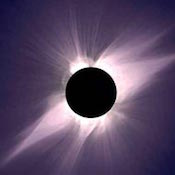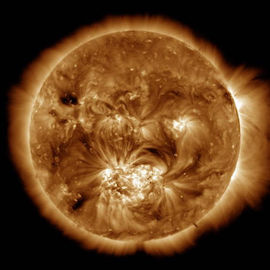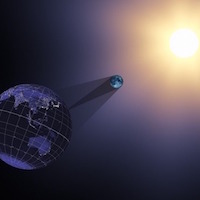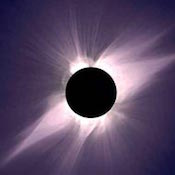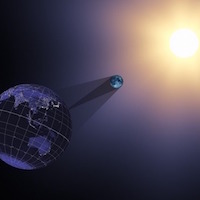Click here to download this video (1920x1080, 70 MB, video/mp4).
What is a solar eclipse?
A solar eclipse happens when, at just the right moment, the Moon passes between the Sun and Earth. Learn all about solar eclipses in this video!
"What Is a Solar Eclipse?" video transcript
Whoa! It’s the middle of the day—so why is the sky getting dark?
It’s a solar eclipse!
A solar eclipse happens when, at just the right moment, the Moon passes between the Sun and Earth.
Sometimes the Moon only blocks part of the Sun’s light. This is called a partial solar eclipse.
Other times, the Moon blocks all of the Sun’s light. This is called a total solar eclipse.
As the Moon blocks the Sun’s light, it casts a shadow on part of the Earth.
The Moon’s shadow creates a trail as Earth rotates. This trail is called the path of totality.
If you want to experience total darkness during an eclipse, you have to be in the path of totality.
In that path, the Moon completely blocks the Sun’s light for a few minutes. It gets so dark that it looks like night time during a full Moon!
If you don’t know what’s happening, it can be confusing. Animals can get confused too.
But this total darkness can also be kind of cool for scientists who study the Sun’s atmosphere, called the corona.
The corona is very dim. It’s usually hard to see because the Sun is so much brighter.
But, when the Moon blocks the Sun’s light during an eclipse, all you can see is the light from the corona!
Total solar eclipses over the land—where people can see them—don’t happen very often.
But when they do happen, the Moon gives scientists—and the rest of us—a glimpse at the corona’s beautiful streams and ribbons. Thanks, Moon!
Find out more about the Sun at NASA Space Place.
Related Resources for Educators
NASA Solar System Exploration: Eclipses Home
Launchpad: Solar Eclipses
Model a Solar Eclipse



